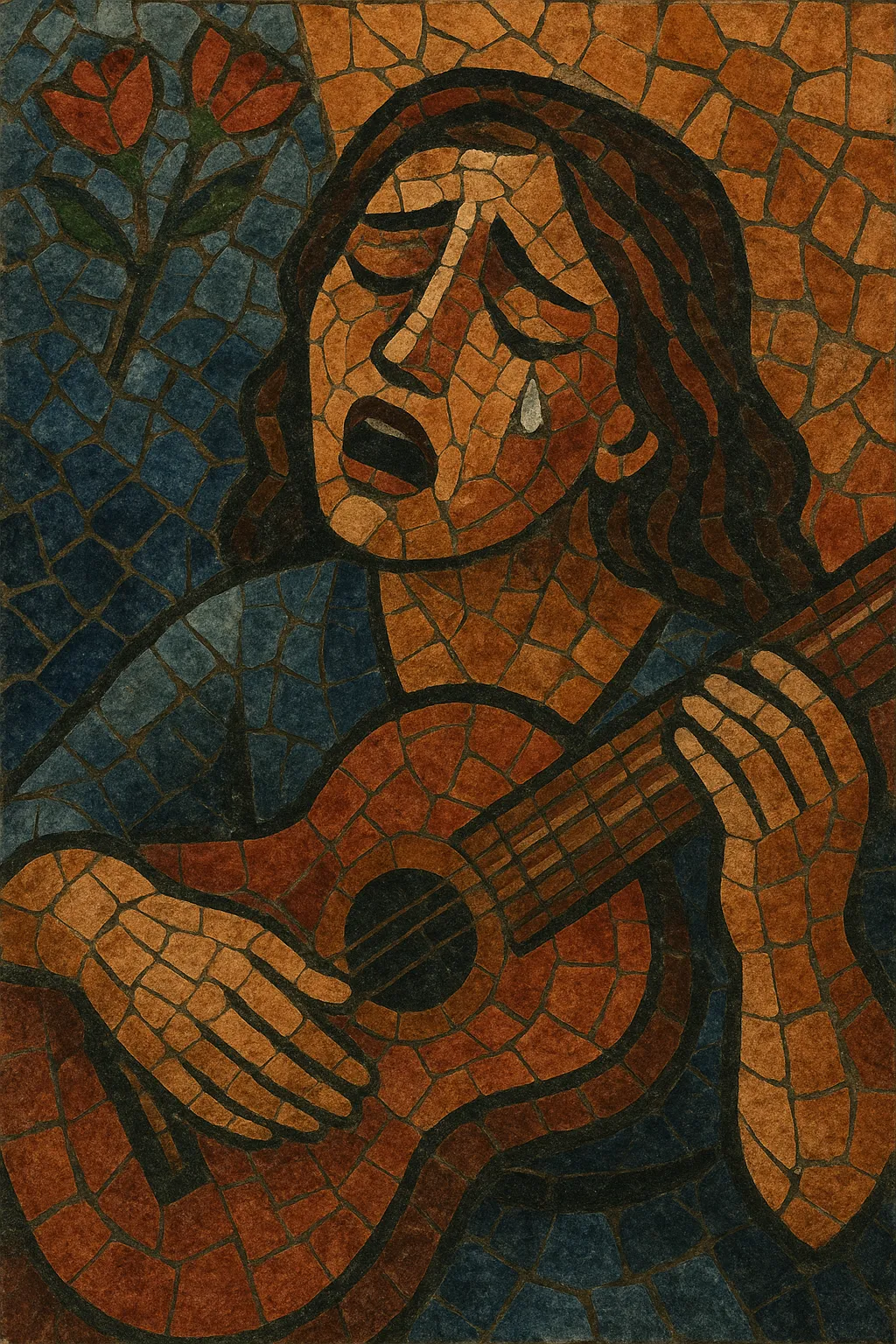Música cebolla is a Chilean strain of hyper‑romantic popular music marked by intensely emotive vocals, melodramatic storytelling, and arrangements rooted in the bolero tradition. The nickname “cebolla” (onion) alludes to its tear‑jerking effect: songs dwell on heartbreak, abandonment, jealousy, and moral dilemmas of love, aiming for an immediate, visceral response.
Musically, it favors slow to mid‑tempo bolero and ballad rhythms in 4/4, lush strings or organ pads, requinto or electric guitar arpeggios, and ornamental lead singing with vibrato, rubato, and portamento. While critics once dismissed it as kitsch, música cebolla has been reappraised as an authentic working‑class urban torch style that connects post‑war bolero with later Chilean romantic pop and “cumbia cebolla.”
Música cebolla took shape in mid‑20th‑century Chile as a local, intensely sentimental reading of Latin American bolero and early Latin ballad traditions. Drawing on radio culture, neighborhood salons, and cantinas, singers adopted the torch‑song ethos of bolero—ornamented vocals and confessional lyrics—while heightening melodrama and daily‑life storytelling.
In the 1960s, the style crystallized on AM radio and television alongside the Chilean Nueva Ola, but with a distinct, more dramatic edge. Orchestras or small combos backed singers who used expressive vibrato, theatrical phrasing, and moralized narratives of betrayal and suffering. Groups that fused bolero harmony with electric instrumentation brought música cebolla into dialogue with contemporary pop and soul sounds.
Although it was sometimes derided as overly sentimental or “lowbrow,” música cebolla persisted in local venues, jukebox culture, and televised variety programs. Its vocal style and lyrical tropes quietly fed into Chile’s romantic pop and the later rise of “cumbia cebolla,” where cumbia bands absorbed its confessional, tear‑jerking storytelling into danceable formats.
Cultural historians and new artists have revalued música cebolla as a uniquely Chilean urban torch tradition. Contemporary acts reference its vocal mannerisms and lyrical directness, while producers borrow its harmonic language and string‑laden textures. Today it is recognized as a bridge between classic bolero, Chilean romantic pop, and modern sentimental cumbia.
Aim for slow to mid‑tempo (roughly 70–95 BPM) in 4/4 with a bolero or classic Latin ballad groove. Leave space for rubato entrances, vocal suspensions, and cadential ritardandos to heighten drama.
Use romantic tonal harmony with diatonic progressions (e.g., I–vi–IV–V, ii–V–I, or iv–V–i in minor). Borrowed chords (bVII, bVI) and secondary dominants add pathos. Write singable, arching melodies with room for vibrato, appoggiaturas, and tasteful portamento at phrase peaks.
Center the lead vocal. Support with requinto or clean electric guitar arpeggios/tremolo picking, nylon‑string rhythm guitar, bass (often simple walking or pedal tones), and light Latin percussion (bongos, maracas, güiro). Add strings (real or synth/organ pads) for cinematic swells. Keep textures uncluttered; feature call‑and‑response fills between vocal lines.
Focus on intimate narratives of heartbreak, jealousy, separation, forgiveness, and moral conflict. Use direct, colloquial language, vivid images (letters, photographs, street corners), and clear arcs from confession to catharsis. Deliver with expressive dynamics, heightened diction, and ornamental phrasing that invites tears but avoids parody.
Favor warm, close‑miked vocals with plate or spring reverb. Subtle tape‑style saturation and mono‑leaning blends evoke classic radio. Allow silence and sustain between lines to amplify the emotional impact.


